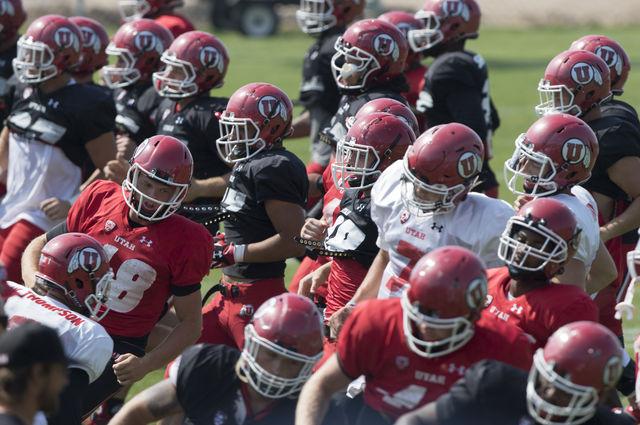A team of engineers and scientists are designing a smart helmet to protect athletes from brain injury.
While the helmet can be used for various sports, the team is especially focused on protecting football players. Dave Carrier, U professor of biology, grew up playing football, constantly hearing about fellow players dying due to head injuries. He approached Mark Minor, associate professor of mechanical engineering, and they went to work.
Carrier, who studies natural responses and instincts, wanted to create an alarm system so that people would know a hit was coming and would clench to resist the impact. Brittany Coats, assistant professor in mechanical engineering, said this natural reflex makes you flex your neck muscles to prevent neck rotation.
“What people don’t realize in traumatic brain injury is that you get an impact to the head, and that causes a certain type of injury inside the brain, but … the long-term damage is actually the rotation caused from it,” she said.
Coats was brought onto the project because of her extensive research in the mechanics of detecting brain injury. She helps calculate the forces the helmet needs to reduce. In order to do this, Minor suggested using active bladders that work off suspension.
Each bladder module has acceleration-sensing capability, a small micro-controller and pressure sensors. The bladders actively regulate the dynamic behavior of the head, Minor said. These helmets act differently according to the direction and velocity of the impact.
“It’s not passive — it’s more active,” Coats said. “That’s what makes it different from existing systems.”
Some helmets can inflate bladders that squeeze the brain and others can measure acceleration, but none so far are doing what this team of researchers is doing.
The team includes Andrew Merryweather, David Schurig, Neal Patwari and Colby Hansen. Schurig and Patwari, from electrical computer engineering, are working on radar antennas in the helmet to create an alarm system warning players of a collision. Minor said it will not change the game, but give players enough time to reduce the blow.
The team is applying for research grants, so an actual product won’t be on the market for several years. They do not expect this to get in the hands of the NFL anytime soon, but they do hope to make a difference for youth players. Minor’s son recently had a traumatic brain injury from football and he lost his vision for four to five months.
“Even if we can prevent head injury in young kids and high school, even collegiate players, I think we would be ahead of the game,” Coats said. “With damage early on, no one truly knows what the effect that has later.”
@carolyn_webber


